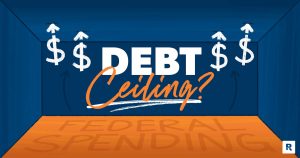Key takeaways
- An installment loan may not be your best option to cover ongoing expenses.
- Some ways to borrow money as needed include credit cards, lines of credit and home equity lines of credit (HELOCs).
- Installment loans typically require immediate repayment which can hinder borrowers who need more repayment flexibility.
While installment loans can be used for nearly every expense, the monthly repayments and interest rates can make them a costly financing choice, especially for those with low credit. Funds are disbursed in one lump sum and paid off in equal monthly payments, also called installments.
If an installment loan isn’t right for you and you need the funds quickly, consider alternatives like a personal line of credit, credit card or home equity line of credit.
1. Lines of credit
Not every lender offers personal lines of credit — especially if you’re looking for an unsecured option. Despite this, they are a worthwhile alternative to a personal loan. Lines of credit offer more flexibility and often have an APR similar to installment loan rates.
Ideal for larger projects or long-term expenses, a line of credit allows you to borrow what you need, when you need it — up to your credit limit. During the draw period, you make interest-only payments each month. When your draw period ends, your line of credit becomes the equivalent of a term loan.
Some lenders offer unsecured personal lines of credit. However, many require you to provide some form of collateral, especially if you’re borrowing a larger amount. Collateral is an asset or property that backs the loan balance. Lenders use collateral to minimize risk for larger loan amounts or to secure loans for bad credit borrowers. If you default on the balance or fail to make the payments over a period of time, your collateral can be seized to satisfy the delinquent payments.
In the case of a personal line of credit, the type of collateral may differ between lenders. Often, a lender may use a savings account, investment account or a certificate of deposit (CD). While unsecured credit lines are less common, some lenders may offer them to the most creditworthy individuals.
Benefits
- Flexible spending.
- Only pay interest on the amount you use during the draw period.
Drawbacks
- Fewer lender options.
- Collateral may be required.
2. Credit cards
Credit cards can be difficult to manage if you have a tight budget or a strict financial plan. They often come with higher interest rates than loans and other financing options, which makes it easier to accrue large amounts of high-interest debt. However, with responsible usage and positive repayment, a credit card can offer exclusive and unique perks, like cash back and travel rewards.
Before taking out a credit card, create a realistic credit card budget to avoid overspending. The high interest rates that most cards carry often only become an issue if you fail to make the payment at the end of your billing period.
The lower your balance at the end of each month, the less interest you will likely pay. Ideally, you’ll make each monthly payment on time and in full, but if there are one or two months where the funds come up short, make at least the minimum monthly payment to avoid late fees. While it may be helpful to use once or twice, only making the minimum payment isn’t recommended as a long-term solution as it will cause your monthly payments to skyrocket.
Keep in mind that credit cards also come with a fair share of fees, including an annual fee. This can range anywhere from $0 a year all the way up to over $600 a year. Typically, the best rewards or travel cards come with annual fees on the higher side and only cater to customers with excellent credit. You also need to spend up to a specific amount to take full advantage of the card’s benefits, so make sure this amount doesn’t result in overspending.
Benefits
- Membership perks like cash back or travel rewards.
- No interest if you pay off the amount you spent before the billing cycle ends.
Drawbacks
- High interest rates compared to personal loans.
- May come with steep annual fees.
3. Home equity lines of credit
A home equity line of credit (HELOC) is the best option if you’ve built up equity in your home and need to cover a series of major expenses. For example, larger home renovation projects or academic-related expenses, like housing costs or tuition not covered by federal aid, are best for a HELOC. Plus, if you use all the funds to improve, buy or build your home, the interest is tax deductible.
The amount you can take out depends on the equity you have in your home, although most lenders allow you to take out up to 85 percent. Much like lines of credit, HELOCs allow you to take out what you need when you need it during the draw period, which generally lasts 10 years.
The major drawback of a HELOC is that your house acts as the collateral for the line of credit. So if you can’t make the payments, your lender can pursue foreclosure to satisfy the delinquent balance. However, the foreclosure process isn’t immediate, and your lender may be willing to negotiate or extend alternate payment plans — even so, it is a risk.
Because HELOCs are a secured debt, the rates and fees tend to be lower than other loans and financing options. Still, you’ll need to meet the income and credit score requirements to secure the lowest rates.
Benefits
- Potential to deduct interest for certain expenses.
- Some lenders only require interest-only payments during the draw period.
Drawbacks
- Risk foreclosure if unable to pay.
- Home appraisal and other fees may be necessary.
When to consider an alternative to installment loans
While there are several types of installment loans that can be used for various expenses, it doesn’t necessarily mean they’re the best option for every situation. For example, most installment loan lenders require that individuals have at least good credit and meet an annual income requirement. If you don’t meet most of the lender’s minimum requirements, you may want to see if you can delay taking on debt and work toward improving your credit score.
While some companies offer other installment loan options for borrowers across the credit spectrum, bad credit loans often have high interest rates and fees. This means that if you’re unable to make your monthly payments, your credit scores will suffer, and you could end up paying fees on top of interest.
You’ll also want to consider an alternative if financing an ongoing, large project. You can only borrow up to a specific amount with an installment loan. If you end up in a situation where you under or over borrowed, you’re stuck with the balance until it’s paid off in its entirety. However, some lenders allow borrowers to take out a second loan after they’ve made payments for a specified amount of time.
The bottom line
Installment loans may be a convenient option when you need to cover a big expense, but they’re not as flexible as other options, like a credit card or a personal line of credit.
However, no matter the route you take, always compare multiple options and weigh the minimum requirements against your financial health before applying. And before going with a specific product, research and prequalify with a few lenders to ensure you’re getting a competitive rate on your personal loan.
Read the full article here










